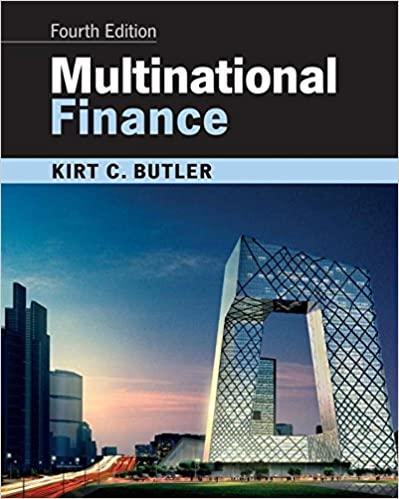Answered step by step
Verified Expert Solution
Question
1 Approved Answer
Interest and Financial Models site. times per year. Column A gives possible values for the number of compounding periods and Column C gives the balance
Interest and Financial Models


 site. times per year. Column A gives possible values for the number of compounding periods and Column C gives the balance at the end of 1 year. formula to fill down the column. For example, you could do this with cell B3. See how well you would perform at the first round of interviews by completing the exercises below. (1+) This simplifies to (1+n1)n to 5 decimal places). In other words, (1+4600 (round to 6 decimal places). In other words, (1+)77300 nearest cent) is $, which means the account earned $ in interest. (e) Correct to 5 decimal places, it appears that as n, (1+n1)n Did you conclude that the limiting value of (1+1)n as n is equal to e (the natural base)? Then, congratulations, you are moving on to the second round of interviews. INTERVIEW - ROUND TWO times per year. Column A gives possible values for the number of compounding periods and Column C gives the balance at the end of 1 year. formula to fill down the column. For example, you could do this with cell B18 into B19. (f) Let n stand for the number of compounding periods. Then, using the compound interest formula, the future value when $1 is invested at 15.1% interest for 1 year will be (1+,1)(?) This simplifies to (1+n0.151)n. (round to 5 decimal places). In other words, (1+/)4500 (round to 6 decimal places). In other words, (1+)77300 nearest cent) is $ which means the account earned $ in interest. (0) Correct to 5 decimal places, it appears that as n, (1+n0.151)n
site. times per year. Column A gives possible values for the number of compounding periods and Column C gives the balance at the end of 1 year. formula to fill down the column. For example, you could do this with cell B3. See how well you would perform at the first round of interviews by completing the exercises below. (1+) This simplifies to (1+n1)n to 5 decimal places). In other words, (1+4600 (round to 6 decimal places). In other words, (1+)77300 nearest cent) is $, which means the account earned $ in interest. (e) Correct to 5 decimal places, it appears that as n, (1+n1)n Did you conclude that the limiting value of (1+1)n as n is equal to e (the natural base)? Then, congratulations, you are moving on to the second round of interviews. INTERVIEW - ROUND TWO times per year. Column A gives possible values for the number of compounding periods and Column C gives the balance at the end of 1 year. formula to fill down the column. For example, you could do this with cell B18 into B19. (f) Let n stand for the number of compounding periods. Then, using the compound interest formula, the future value when $1 is invested at 15.1% interest for 1 year will be (1+,1)(?) This simplifies to (1+n0.151)n. (round to 5 decimal places). In other words, (1+/)4500 (round to 6 decimal places). In other words, (1+)77300 nearest cent) is $ which means the account earned $ in interest. (0) Correct to 5 decimal places, it appears that as n, (1+n0.151)n Step by Step Solution
There are 3 Steps involved in it
Step: 1

Get Instant Access to Expert-Tailored Solutions
See step-by-step solutions with expert insights and AI powered tools for academic success
Step: 2

Step: 3

Ace Your Homework with AI
Get the answers you need in no time with our AI-driven, step-by-step assistance
Get Started


